NORSD Activity Update
October 2025
Community Update: Grease Interceptor Monitoring & Enforcement Program
The North of River Sanitary District (NORSD) is committed to protecting our community’s sewer infrastructure and the environment. As part of this commitment, we continue to strengthen our Grease Interceptor Monitoring and Enforcement Program. This program is designed to ensure that food service establishments (FSEs) are properly maintaining their grease interceptors to prevent fats, oils, and grease (FOG) from entering the sewer system. Excess FOG can cause costly blockages, sewer overflows, and environmental damage.

Key Program Highlights:
- Routine Inspections: NORSD staff conduct regular inspections of grease interceptors at permitted FSEs.
- Maintenance Requirements: Businesses are required to clean their interceptors at appropriate intervals and maintain records of service.
- Enforcement Measures: Non-compliance may result in warnings, fines, or other enforcement actions to ensure public health and system reliability.
- Education & Support: We’re here to help! NORSD offers guidance to businesses on best practices for FOG management and compliance.
We appreciate the cooperation of our local businesses in keeping our sewer system clean and functioning efficiently. Together, we can protect our infrastructure and the environment for future generations.
September 2025
The District received and is reviewing the 90% complete Construction Plans and Specifications from the Engineering Consultants that are tasked preparing the engineering design and Contract Documents.
This Project will increase the wastewater treatment plant capacity from 7.5 million gallons per day (mgd) to 10 mgd. Additionally the “secondary” process which provides biological treatment of the wastewater will be converted to a technology that allows for removal of nitrogen. This will aid in protection of our groundwater.
As the water, solids, and gas will all be recovered by the wastewater treatment plant, it will be renamed to Water Resource Recovery Facility (WRRF).
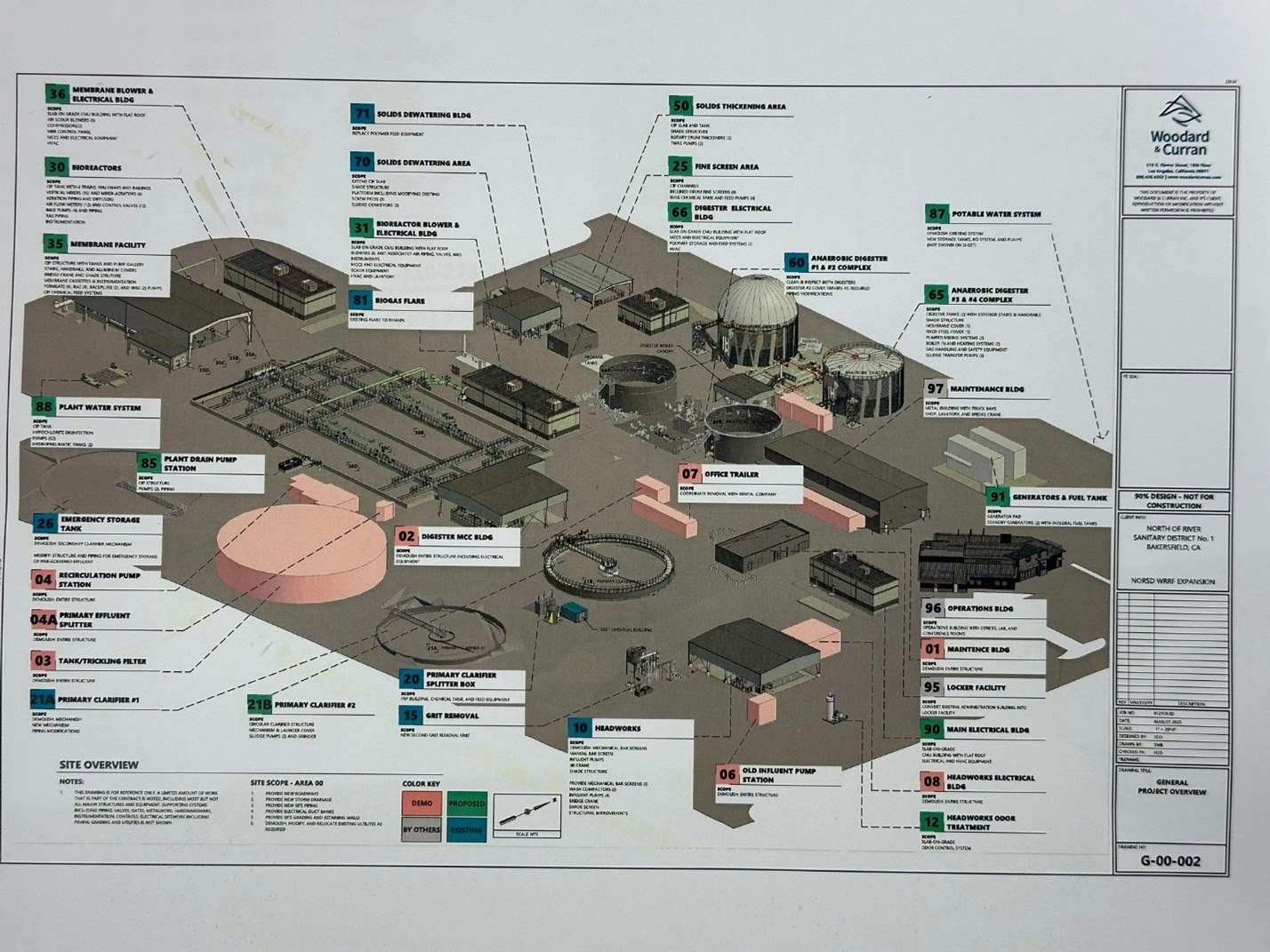
August 2025
This week, our dedicated Sanitation Department team conducted critical underground infrastructure inspections as part of our ongoing commitment to keeping our community clean, safe, and functioning efficiently.
Our crews performed confined space entries into manholes to inspect pipelines, remove obstructions, and assess structural conditions. These proactive efforts help prevent service disruptions, ensure compliance with safety and environmental standards, and extend the life of our underground infrastructure.

Safety is always our top priority. Each crew member followed strict confined space entry protocols, including atmospheric monitoring, harnesses, ventilation, and standby rescue support.
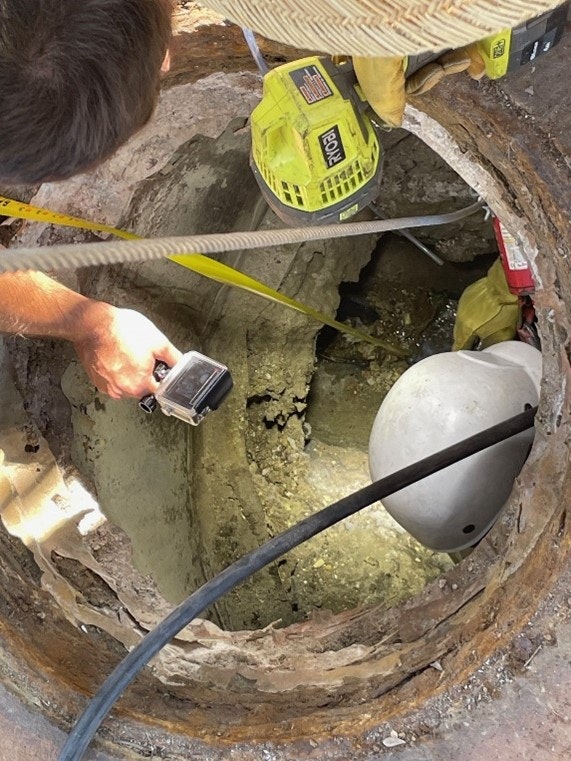
Why It Matters:
- Prevents blockages and overflows
- Reduces emergency repairs and costs
- Keeps our waterways clean and our streets safe
Thank you to our hardworking field crews who make this essential work look effortless — even in the toughest conditions underground!
July 2025
Reliably transporting sewage from homes and businesses to the wastewater treatment plant demands clean free flowing sewer pipelines. These pipelines are “out of sight”, with the visual clue being the sewer manhole covers in your streets – they look like our logo.

North of River Sanitary District routinely inspects these pipelines with a self-propelled camera vehicle. The vehicle navigates the active sewers logging root obstructions, pipeline breaks and cracks, grease buildup, and debris. Obtaining this information allows District crews to address each particular situation before it causes a “sanitary sewer backup”.
Watch out for this “video van” in your streets and alleys, District staff are busy keeping your sewers free flowing.
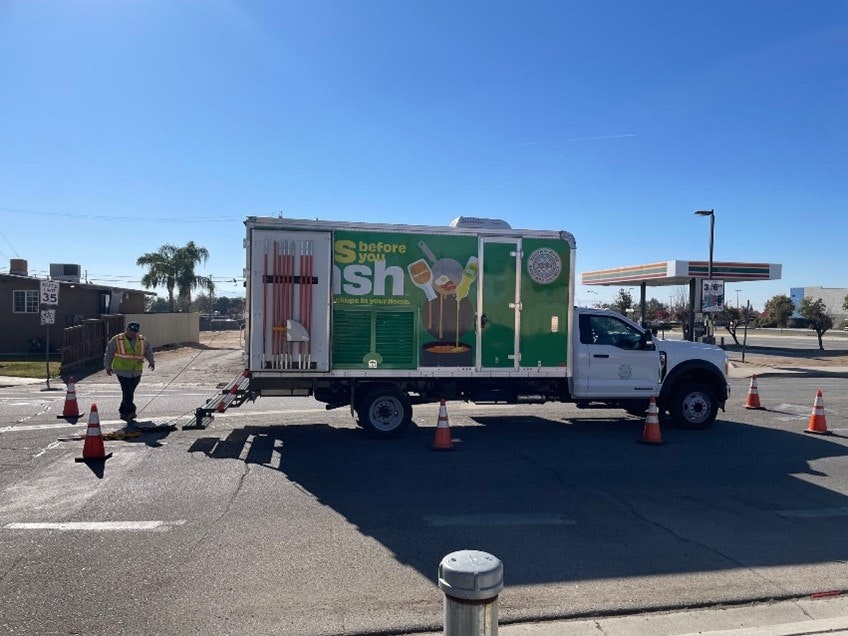
June 2025
NORSD stores treated effluent in several large ponds for use during the irrigation season on feed and fodder crops. Effluent is wastewater that has gone through the entire treatment process and is ready for application.
The high winds associated with one of the large storms of the winter of 2023/2024 overtopped the high density polyurethane slope protection liner and eroded one of the pond embankments. The pond was emptied, the embankment reconstructed, the slope protection liner replaced, and the roadway and fencing reconstructed. The pond is back in service and ready for the upcoming winter of 2025/2026.
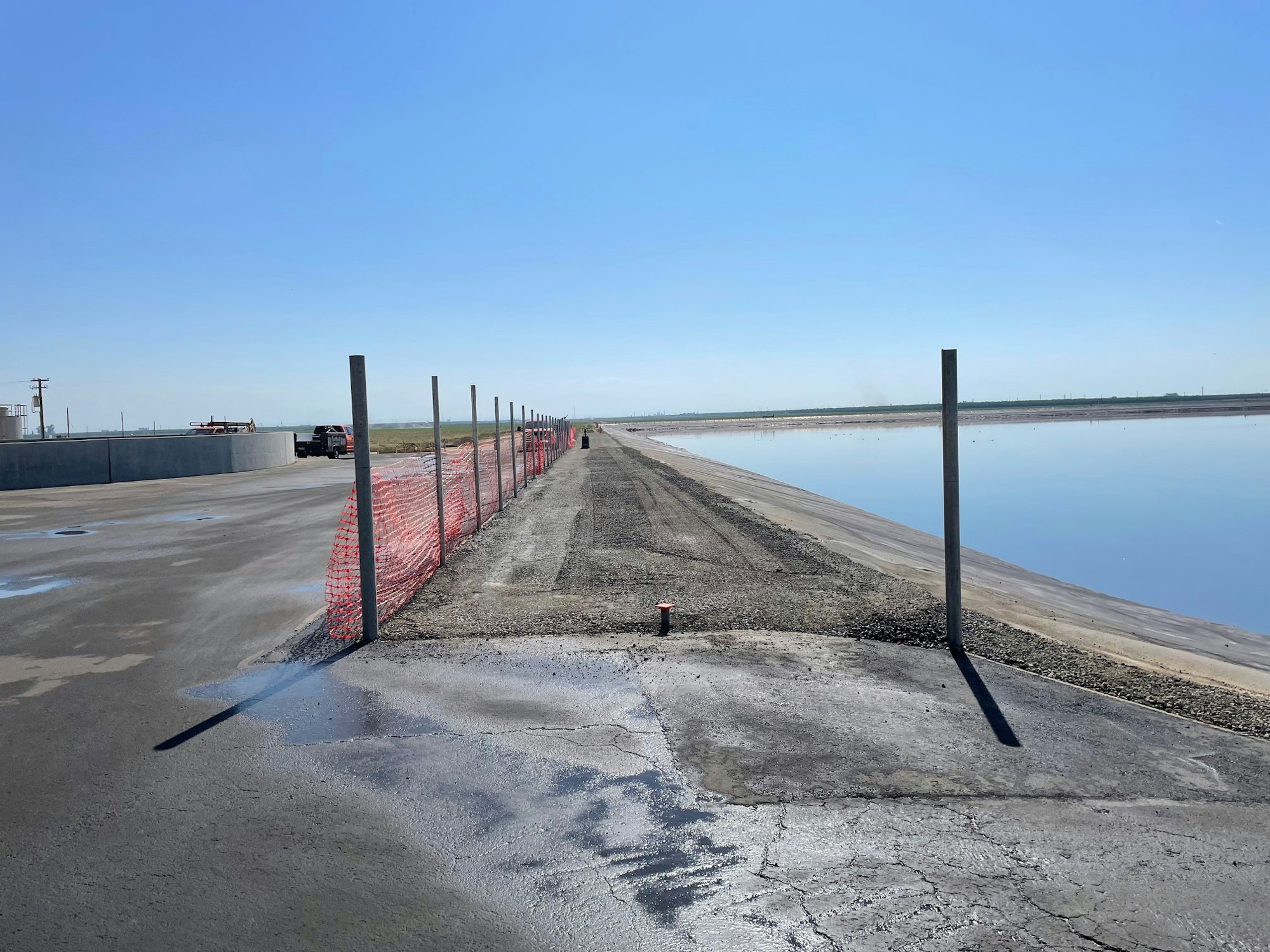
May 2025
North of River Sanitary District operates and maintains the sewer collection, treatment and disposal facilities necessary for a healthy community. Maintenance includes the asset (equipment and structures) repairs and replacement required to provide sewer service to current and future generations.
For the upcoming fiscal year 2025-2026, the District Board of Directors voted to increase the sewer service fee by 5 percent. This increase reflects the increased costs to operate and maintain the sewer system.
“Flushing” the sewer system is an ongoing District activity. Keeping the pipelines clear and flowing freely.
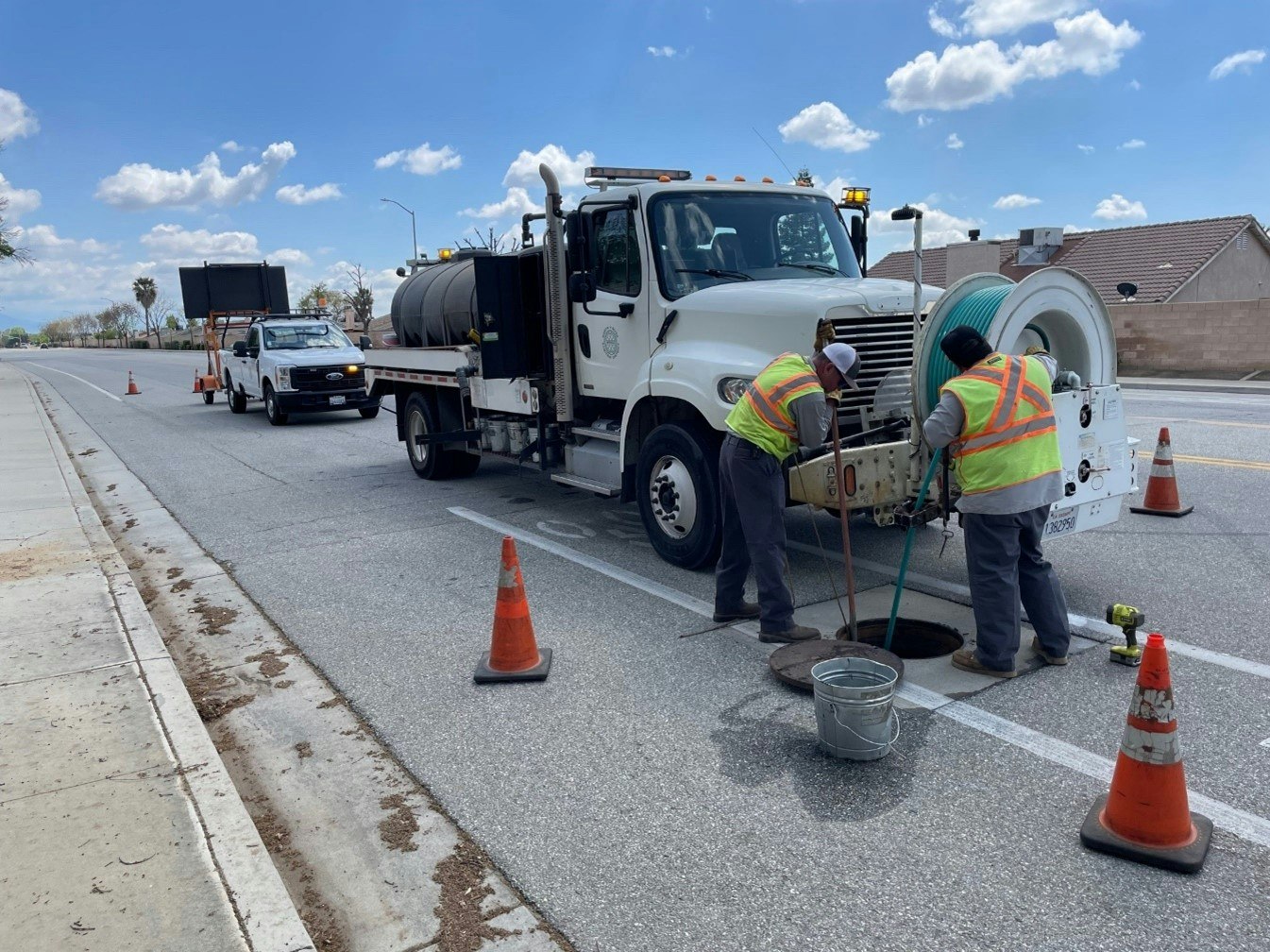
April 2025
North of River Sanitary District sewer pipelines convey raw sewage from your residence or business to the wastewater treatment plant.
· “Rags” are an accumulation of “baby wipes”, flushable wipes, clothing, towels, etc. They tend to bind up into “rag monsters” and settle out in the sewer pipelines.
· District Staff expend great effort to remove these accumulations, allowing free flow of sewage to the wastewater treatment plant.
Please keep all “rags” out of the sewer. They are not meant to be flushed down the toilet.
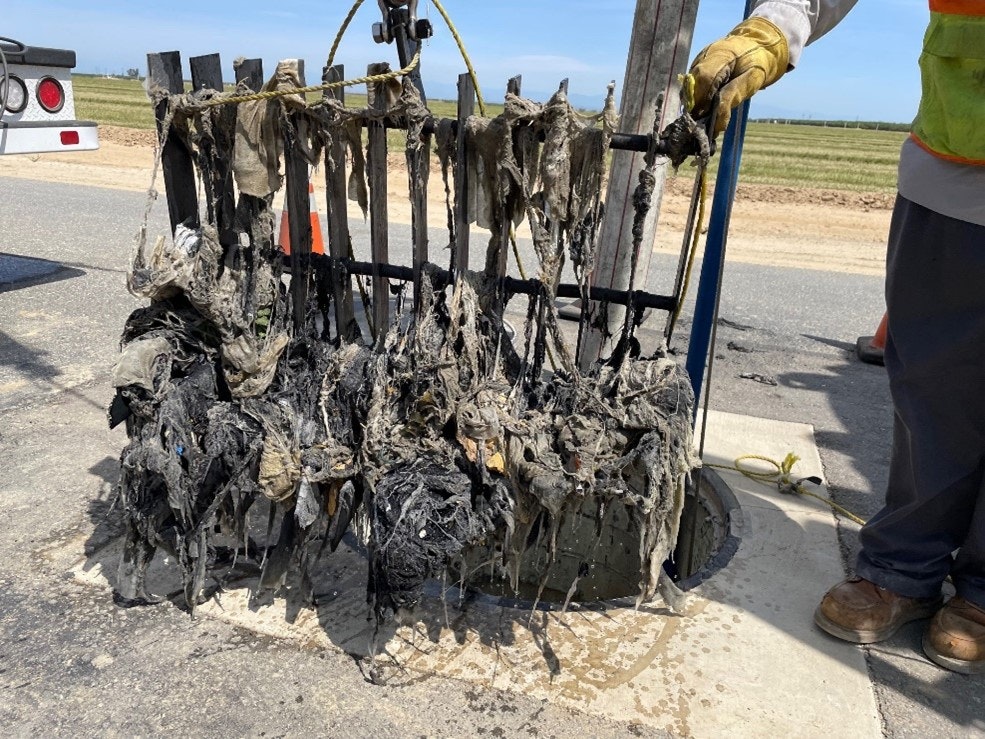

_______________
March 2025
North of River Sanitary District has been repairing deteriorated sewer pipeline manholes along Seventh Standard Road.
- The pipeline was constructed in the early 1990s, and the wastewater has caused deterioration of the concrete manhole structures.
- Rehabilitation includes a combination of fiberglass manhole inserts, cured in place polyurethane liners, epoxy coatings, and corrosion resistant manhole covers.

----------
February 2025
North of River Sanitary District is currently designing an upgrade and expansion to the Wastewater Treatment Plant. Growth within the NORSD’s sphere of influence and within the City of Shafter necessitate the need for additional treatment capacity. Currently projections are that construction will commence in 2026.
- Treatment capacity would increase from 7.5 million gallons average daily flow to 10.
- Secondary process will be converted from a trickling filter to a membrane bioreactor. Allowing for denitrification of the wastewater.
